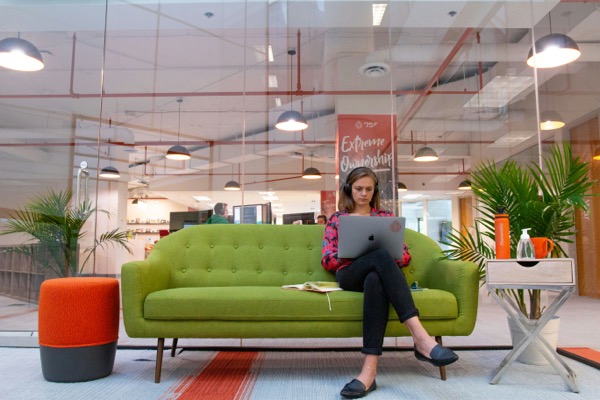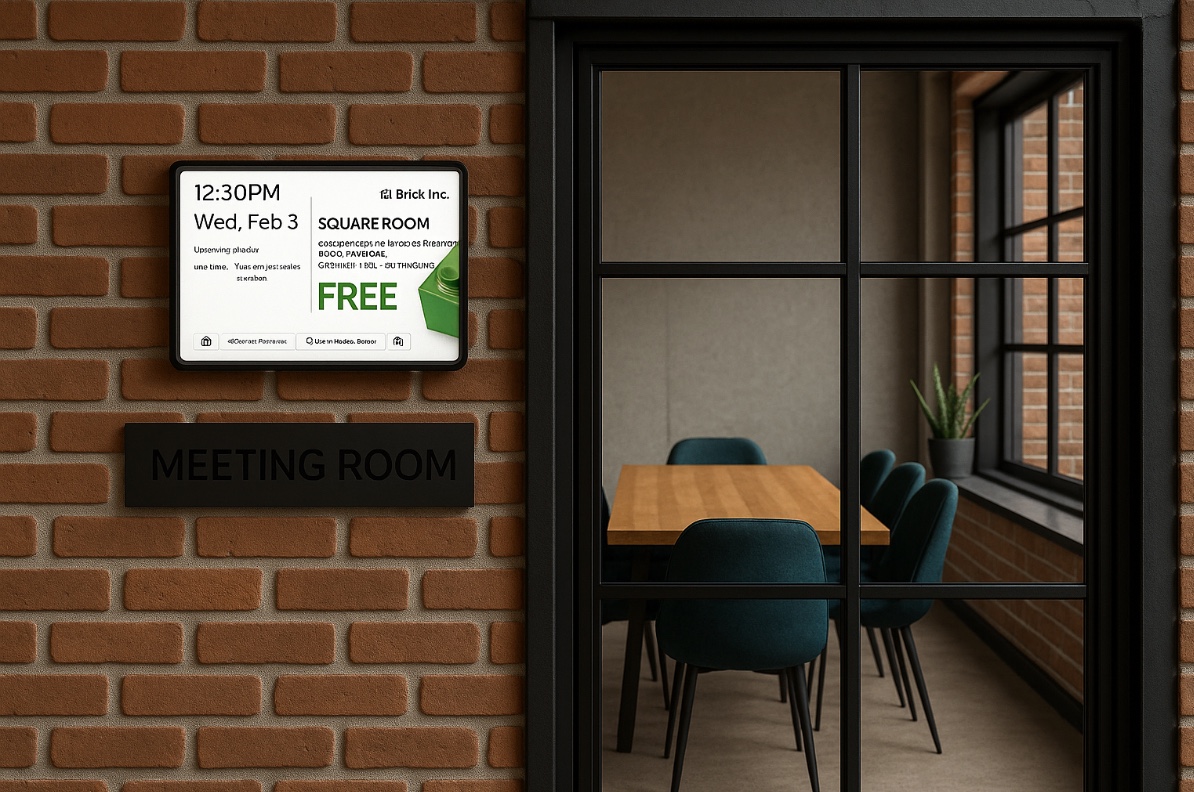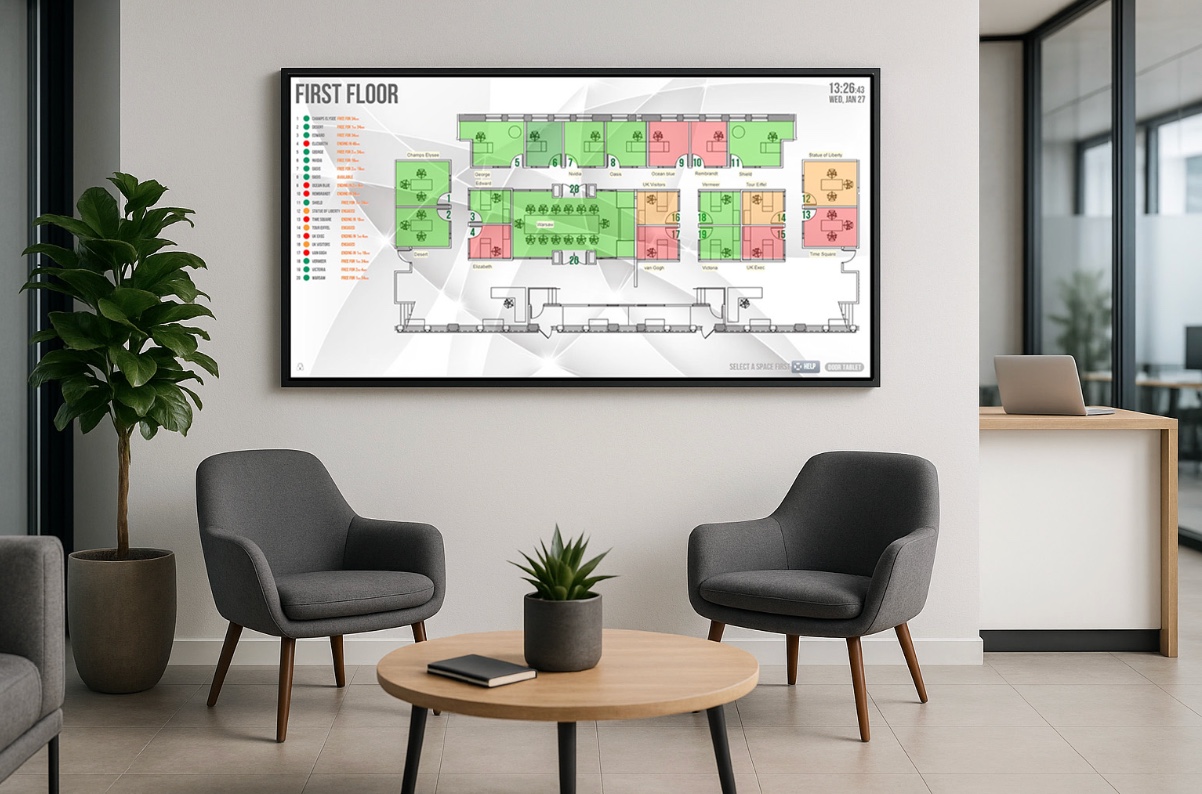
Employees notice the little things: finding a desk without circling the floor, locating a meeting room without asking reception, sensing that the air and lighting adjust to real use. Those moments add up to what people now call workplace experience. To deliver it, offices need a coordinated set of digital tools - a workspace-management stack - that quietly runs behind the scenes.
Independent research shows that more than
80% of large companies now integrate these tools through APIs or data platforms to create a single source of truth for space data..
When the stack is well-chosen, secure by design and delightful to use, employees spend less time hunting for rooms or desks and more time doing their best work. The article will explain the must-have layers of the stack, the questions every IT, Facilities, and HR team should ask before buying
What Do We Mean by “Workplace Tech Stack”?
A workplace tech stack is the collection of cloud and on-prem tools that handle bookings, visitor flows, space analytics, meeting services and communications.
When these pieces share data, the office feels effortless to navigate for employees and the teams who run it.
The Core Tools—In Practice and What to Look For
Modern employees expect the office to work like their favourite app - fast, intuitive, and secure - yet many still waste minutes every morning hunting for a free desk or a meeting room that isn’t double-booked. This gap between expectation and reality is driving a quiet revolution in workspace-management tools. So let’s see some workspace management tools that are a must-have in any workspace:
1. Room & Desk Booking
 In practice:
In practice:
Picture
a 10-inch touch panel beside every meeting room: the bezel glows green or red, shows your brand colours, and pulls its schedule straight from Microsoft 365 or Google Workspace within seconds of a change. A hot-desking floor plan in the same system lets hybrid staff tap an open seat, see avatars of colleagues nearby, and book on the train before they arrive. If nobody checks into a reserved room, after a grace period, motion sensors automatically free the space so someone else can use it.
What to look for:
- Calendar & ID integration. Real-time sync with Microsoft 365/Exchange, Google Workspace, and SSO so nothing lives in a silo.
- Branding and accessibility. Ability to swap logos, colours, languages, and even lexicon without code; screens should support 15-plus languages and large-text options for inclusivity.
- Right-size hardware. Panels around 10 inches with PoE power (one cable, no batteries) and LED status strips that are visible down the corridor.
- Sensor-aware automation. Built-in or external sensors that confirm presence, auto-check in, and release no-shows.
2. Wayfinding
 In practice:
In practice:
Imagine arriving at a large corporate campus as a visitor or as an employee who only comes in twice a week – finding the right conference room or a colleague’s desk can be daunting without guidance. A
good wayfinding system displays floor maps on any display in key spaces (lobby, elevators, etc.)
What to look for:
- Live data feed. Maps must pull real-time availability from the booking layer so green spaces are truly free.
- Editable, on-brand floor plans. Drag-and-drop tools to recolour icons, rename zones, and match corporate fonts without calling a developer.
- Scalable hardware. Runs on standard signage players or browsers, not proprietary boxes, so Facilities can repurpose existing screens.
3. Occupancy Sensors & Analytics
In practice:
Motion sensors under desks and in the ceiling register real use. Facilities managers can see the average utilisation of meeting rooms. They can convert underused boardrooms into more huddles and save on the floor rent. Globally,
average office utilisation is still around 35%, down from 64% pre-pandemic, so data-driven changes matter.
What to look for:
- Anonymised data: Sensors count presence, not people’s identities, easing “Big Brother” fears.
- Clear dashboards: Metrics in plain language, like peak occupancy, average meeting size, with export options.
Internal Questions to Ask Before Going to Market
- What employee problems are we solving first? Is the pain finding rooms, managing hybrid seating, or knowing which floors to heat? Rank them before demo day so features don’t distract from goals.
- What experience do we want to create? A friction-free day means bookings under one minute, maps at every decision point, and zero surprises. Translate that into must-have checkpoints.
- How much change can our culture absorb? If people still rely on paper signs, start with room panels and grow. If staff are mobile-first, prioritise an app.
- Who will own the data? Decide early which team (IT, CRE, HR) keeps the dashboards, sets retention rules, and reports wins to leadership.
- What does success look like in 12 months? Maybe it’s 20% fewer no-shows or 15% higher employee satisfaction scores.
These conversations align stakeholders and prevent shiny-object syndrome once you hit the marketplace.
Conclusion: Designing an Unparalleled Employee Experience
Great offices feel almost
magical: the desk you need is open, the room you booked is ready, and the building itself seems to understand when and how people use it. That magic is the result of a well-built workspace-management stack—tools chosen for clarity, trust, and day-to-day ease rather than pure specs.
When employees spend less time hunting for space and more time doing meaningful work, engagement rises and real-estate costs fall.
A workspace management solution like
Door Tablet bundles every layer, room & desk booking, interactive wayfinding, motion-based auto-release, and utilisation analytics into one solution, making that seamless experience easier to deliver.
Build the right stack, and the technology fades into the background while people and ideas move effortlessly to the foreground.